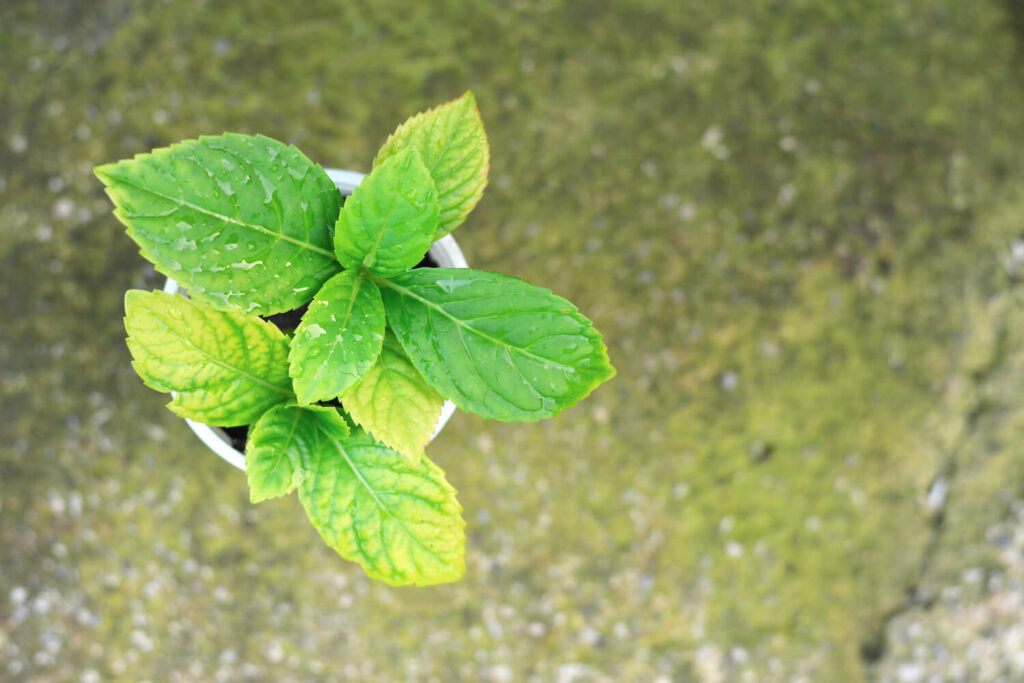How Hydrangea Leaves Turning Yellow can Save You Time, Stress, and Money.
How Hydrangea Leaves Turning Yellow can Save You Time, Stress, and Money.
Blog Article
The 4-Minute Rule for Hydrangea Leaves Turning Yellow
Table of ContentsThe Hydrangea Leaves Turning Yellow DiariesOur Hydrangea Leaves Turning Yellow DiariesThe Facts About Hydrangea Leaves Turning Yellow UncoveredThe Greatest Guide To Hydrangea Leaves Turning Yellow
Hydrangea plants are recognized for their lovely blooms, yet occasionally their leaves can transform yellow. This is normally a sign that something is incorrect and the plant requires your assistance.Nonetheless, Hydrangea leaves turning yellow can be a cause for problem. There are numerous reasons that Hydrangea leaves turn yellow, and most of them are very easy to repair. Allow's look at one of the most common factors why Hydrangea leaves turn yellow and just how to repair them. Hydrangea leaves normally transform yellow when the plant is overwatered.
When the origins of a plant are immersed in water for extended periods, they begin to asphyxiate and rot. This procedure cuts off the roots' oxygen supply, creating the leaves to turn yellow and eventually die. Overwatering can likewise cause various other issues such as leaf drop, root damage, and fungal growth.
If you think your Hydrangea is overwatered, the most effective solution is to allow the dirt dry out totally prior to sprinkling again. It's likewise an excellent idea to inspect the drainage of your pot or yard bed and make certain that water is not pooling around the plant's origins. Hydrangea plants need well-drained dirt to flourish.
How Hydrangea Leaves Turning Yellow can Save You Time, Stress, and Money.
You should additionally guarantee that you are not sprinkling your Hydrangea frequently. Watering as soon as a week should be adequate, and a lot more frequently if the climate is hot and completely dry. Hydrangea leaves can likewise transform yellow if the plant is not obtaining sufficient water. This takes place when the plant does not obtain sufficient water, and the dirt begins to dry.

This is understood as "fertilizer melt," It takes place when the plant's roots are subjected to too much plant food. Other indications of fertilizer melt include brownish or yellow fallen leaves, wilting, and stunted development.
This will certainly aid remove any kind of excess plant food from the roots of the plant. It's additionally a good concept to minimize the quantity of fertilizer you are making use of.
Get This Report on Hydrangea Leaves Turning Yellow

If your Hydrangea is plagued with pests, dealing with the plant with neem or gardening oil is the ideal remedy. It's also good to remove any affected leaves from the plant (Hydrangea Leaves Turning Yellow).
To avoid spreading the disease, guarantee to sanitize your scissors before cutting any type of ends. Hydrangea leaves can likewise turn yellow if the temperature level worries the plant. This typically occurs when the plant is revealed to severe chilly or warm. The fallen leaves of the plant will turn yellow and begin to hand over.
If the temperature level worries your Hydrangea, you need to relocate the plant to a place this content where it will certainly be shielded from the extreme cool or warmth. You can additionally attempt to supply the plant with some partial shade if exposed to guide sunlight. You can also try including mulch around the plant base to help control the temperature.
The Main Principles Of Hydrangea Leaves Turning Yellow
The leaves can likewise transform yellow if the Hydrangea plant has root rot. This is generally triggered by overwatering or inadequate drainage. When the plant's roots are immersed in water for too long, they begin to rot. Among the most typical origin rot signs and symptoms is yellowing fallen leaves, as the fungi prevents the roots from soaking up nutrients from read this post here the soil.
Various other indicators of root rot include stunted growth, wilting, and fallen leave drop. Inspect the origins of your Hydrangea if it has origin rot. If they are black or brown, then they are possibly rotten. If some healthy and balanced origins are left, you can attempt to conserve the plant by replanting it in a new pot with fresh dirt.
If your Hydrangea is heavily affected by root rot, starting with a new plant is best. As Hydrangeas age, their fallen leaves will slowly turn yellow and brown prior to falling off the plant.
You can help the plant by ensuring it is obtaining adequate water and nutrients. You can additionally mulch around the plant base to aid it retain moisture. There are several reasons why hydrangea leaves could transform yellow and diminish. Hydrangea view website Leaves Turning Yellow. One opportunity is that the plant is not getting enough water.
Report this page